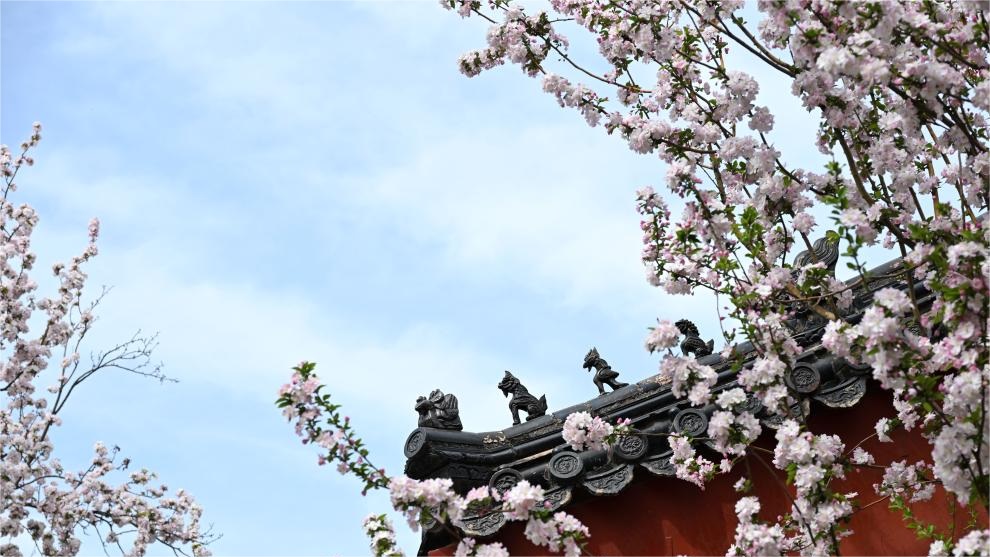Letter from China: Once-impoverished Lankao thrives on paulownia trees
LANKAO, Henan Province, April 8 (Xinhua) -- Swaying in the wind, blossoming paulownia trees are a feast for the eyes in central China's Lankao County in April. When it comes to paulownia trees, Chinese people often think of Jiao Yulu, a household name who died on duty at the age of 42.
Located on the southern bank of the Yellow River, Lankao had long been plagued by sandstorms, floods, and unproductive saline soil, and was known for extreme poverty in the 1950s and 1960s.
Famine was exacerbated by terrible natural disasters in 1962. Streets were empty while the local railway station was packed with starving people, waiting to climb up onto a train to flee their homeland and seek food elsewhere.
Jiao Yulu, already suffering from severe liver illness, was appointed Party chief of the county during that difficult time. Jiao took the lead in planting paulownia trees and devoted all his energy to improving the environment and people's lives until his passing in 1964.
Tears sting my eyes every time I read his stories. Around the 60th anniversary of Jiao's passing, I finally got the chance to visit Lankao, and the trip was an eye-opener: The fragrant paulownia trees not only make the county a scented paradise but have also turned out to be a source of wealth for the locals.
Paulownia wood is a fine material used to make traditional Chinese musical instruments. Currently, the county has more than 200 companies producing over 20 kinds of traditional Chinese musical instruments, which take up 33 percent of the domestic market.
Kong Haiguang, a middle-aged owner of a guqin (an ancient seven-stringed zither) workshop, told me his workshop produces about 100 guqin annually and each sells for around 60,000 yuan (about 8,450 U.S. dollars).
"Our products are mainly for the high-end market, and have built a regular customer base," Kong said.
As one of the top four classical arts in ancient China, also including chess, calligraphy and painting, guqin has been historically seen as one of the most important symbols of traditional Chinese culture.
"For me, it's not merely a business, but also a way to carry forward traditional Chinese culture," said Xu Yachong, a younger guqin maker, who also teaches guqin lessons via livestreaming on the internet.
With more orders coming in every year from home and abroad, Xu said he could feel the influence of the Chinese culture expanding.
During my stay, I was also amazed to learn that the paulownia wood can be used to make furniture.
Over 6,000 furniture manufacturing and sales companies are operating in Lankao, providing almost 60,000 job opportunities for the locals. In 2023, the total output of Lankao's furniture manufacturing industry reached 42.3 billion yuan.
As I meandered through the state-of-the-art furniture display hall, I couldn't help but envision the future for Lankao: a greener and more prosperous county, brimming with hope and opportunity.
There is a Chinese proverb that says: One generation plants a tree; the next sits in its shade. Owing to the hard work of predecessors like Jiao Yulu, the county is thriving and people there are able to enjoy a much more comfortable life.
Photos
Related Stories
Copyright © 2024 People's Daily Online. All Rights Reserved.









